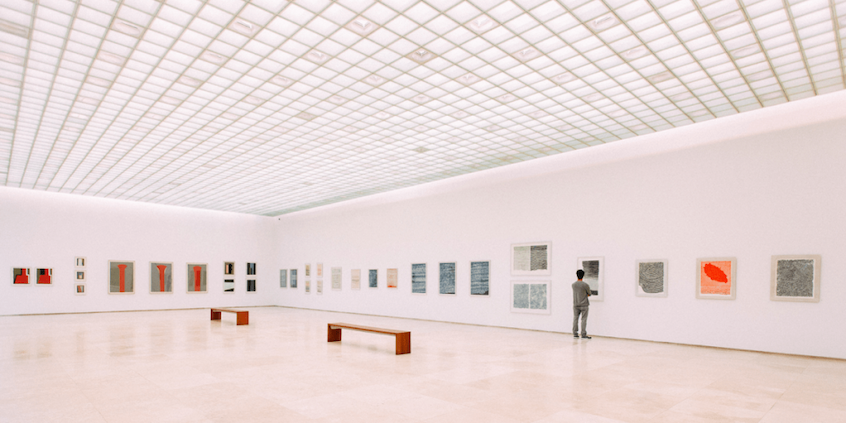The Seven Things You Should Know About Art Finance

The practice of using art as collateral for a loan has seen significant growth recently. Collectors are increasingly managing their art with an economic eye, and are exploring art financing as a way to re-deploy capital locked-in their high-value passion asset. To help you get to know our newest asset class, we’ve outlined the 7 things we think you need to know about Art Finance.
FACT 1: With an influx of new buyers, the Art Finance market is growing, particularly for those whose borrowing needs can’t be met by traditional banks.
The 2018 Art Basel/UBS Art Market Report showed that while there are still a limited number of collectors at the top end of the market, the market continues to grow, reaching $63.7B. This asset class is expected to expand even further as more financial institutions become comfortable with Art Finance. Currently, there are two groups that commonly use art lending: private collectors looking to reinvest capital, and art market professionals, namely as galleries and dealers whose finances don’t meet a traditional bank’s narrow lending criteria.

FACT 2: Art Finance is growing year-over-year.
As the value of art rises, it is becoming a more meaningful part of a collector’s net worth. Prior to purchase, today’s collector is increasingly focused on an artwork’s future potential to appreciate, and through which trusted sales channel such value can be best realized. Selling an artwork can be quite challenging, however, given high transaction costs and other inherent expenses.
The Art Finance industry is being driven by art’s high value and relative lack of liquidity. Securing an art loan to fund other investment opportunities has become an increasingly popular alternative to selling. This enables collectors to extract liquidity from their art collection and reinvest the loan proceeds into higher yielding traditional or alternative investment offerings
FACT 3: Borrowers request loans at many points in an economic cycle.
Like most markets, the art market is cyclical. During a downturn, borrowers often look for liquidity, without losing ownership of their works of art. During an upturn, borrowers feel confident enough about their future finances to acquire new art, or they borrow rather than sell to avoid paying large capital gains taxes.
Regardless of market conditions, blue chip art with strong provenance by the top 200 artists, like Warhol or Picasso, have historically retained their values well.

FACT 4: The U.S. is a leader in the art lending space.
The U.S. is a leader in art lending for two reasons. First, the regulatory and legal landscape is among the most accommodative for secured lending activities. Second, the relative market size and activity level lends itself to growth. There is a growing demand globally, which is expected to grow in multiple geographic areas, most notably in China.
FACT 5: Artworks created by artists with established track records are generally the most valuable.
While ‘hot’ emerging artists may demand high prices for their artworks in today’s market, their valuations are subject to greater future volatility. Loan collateral should at least maintain its value, and past performance through various economic cycles is our best indication of future stability. It is preferable that the art used as loan collateral is supported by a deep buyer base that could provide a ready bid at any point in the cycle.

FACT 6: Data is playing a larger and larger role in Art Finance, especially in evaluating risks in loans.
Data is critical. Market data and intelligence are key components of valuation and credit underwriting. YieldStreet / Athena Art Finance uses public data to derive proprietary analytics specific to an artist to help them understand an artist’s relative liquidity in the marketplace.
FACT 7: Often, the biggest barrier for borrowers is knowing that this type of financing is available.
It’s important for art collectors and art dealers to be aware of the financial products now available to them, and how using their art as collateral can help them achieve their financial goals. As we see it, Art Finance’s single largest limitation is awareness.
This communication and the information contained in this article are provided for general informational purposes only and should neither be construed nor intended to be a recommendation to purchase, sell or hold any security or otherwise to be investment, tax, financial, accounting, legal, regulatory or compliance advice. Any link to a third-party website (or article contained therein) is not an endorsement, authorization or representation of our affiliation with that third party (or article). We do not exercise control over third-party websites, and we are not responsible or liable for the accuracy, legality, appropriateness or any other aspect of such website (or article contained therein).
What's Yieldstreet?
Yieldstreet provides access to alternative investments previously reserved only for institutions and the ultra-wealthy. Our mission is to help millions of people generate $3 billion of income outside the traditional public markets by 2025. We are committed to making financial products more inclusive by creating a modern investment portfolio.


